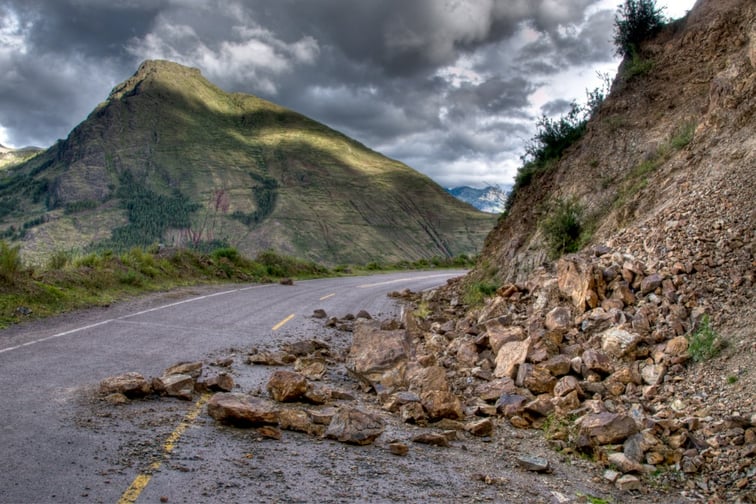

Ancient landslides in the Cariboo region of British Columbia have been reactivated, resulting in damage requiring nearly $1 billion in federal disaster assistance funds.
The reactivation is connected to the slides and flooding that inundated the region during the spring seasons of 2020 and 2021, citing geotechnical studies that have linked “ongoing land movement beneath hundreds of homes with historic, slow-moving landslides”, a report by The Canadian Press highlighted.
It also unveiled the full financial impact of these events based on details from a December 2021 briefing note prepared for.
The document, which was obtained through a freedom of information request, estimated that the damage caused by the landslides would be eligible for federal disaster assistance of $995 million.
The BC government had attributed the “unprecedented slides and road washouts” of 2020 and 2021 to wildfires and weather patterns linked to climate change, according to The Canadian Press, and stated that historic slides were “reawakened.”
However, experts interviewed by The Canadian Press offered a different explanation for the landslides, arguing that the real cause is due to logging and forest loss.
Ancient landslides are defined as “large-scale tracts of land that move over time, impacting communities, roads and bridges”, according to the BC Ministry of Transportation and Infrastructure.
These are thousands or even millions of years old and have been preserved in the landscape, typically moving slowly by a few millimetres throughout a day or year.
When ancient landslides are reactivated, they “move downward more rapidly and dramatically,” causing roads to be washed out or buried. There are several factors that can trigger this rapid movement, but it always has to do with how the integrity of a slope is destabilized or disrupted.
University of BC forestry professor Younes Alila told The Canadian Press that forest loss due to extensive logging, as well as mountain pine beetle infestation and wildfires, is what played a key role in the hydrological disruptions behind the slides in Cariboo.
“If the government recognizes and admits to the cause of the landslides, or the flooding, I think they could actually make much better decisions moving forward,” Alila said, voicing concern over the fact that money is being spent on repairs that could easily be undone by another event.
Alila, whose research is focused on watersheds in the province's Interior, added that forests help regulate springtime snowmelt. With less trees, the ground becomes oversaturated and causes the water table to remain elevated for a longer period of time.
“It's when the groundwater pressure exceeds a certain threshold more frequently and over a longer period of time that the soil starts caving in,” he said.
Mike Morris, the BC Liberal member of the legislature for Prince George-Mackenzie and a former public safety minister, agreed with this assessment and said that the hydrological changes caused by forest loss should be considered as “one of the most high-risk situations in the province.”
Similarly, Bob Simpson, the former mayor of Quesnel, said the “massive clearcuts” from salvage logging had changed the hydrology of the area.
“Anybody who thinks otherwise is living in La La Land,” he told The Canadian Press.
“The fact remains that both climate change and land use and land-cover changes exacerbate the magnitude, the frequency and the duration of these extremes,” Alila said further.
What are your thoughts on this story? Feel free to share your comments below.
